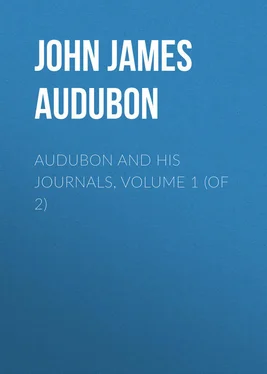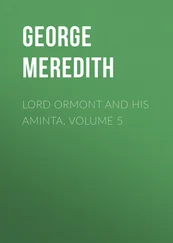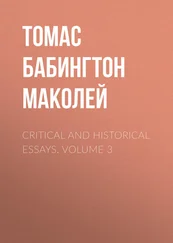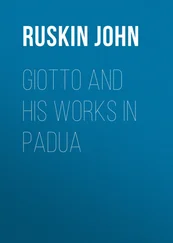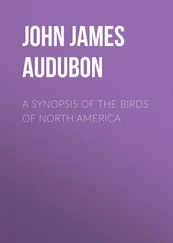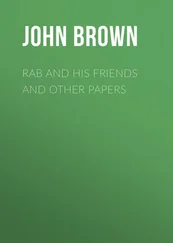John Audubon - Audubon and his Journals, Volume 1 (of 2)
Здесь есть возможность читать онлайн «John Audubon - Audubon and his Journals, Volume 1 (of 2)» — ознакомительный отрывок электронной книги совершенно бесплатно, а после прочтения отрывка купить полную версию. В некоторых случаях можно слушать аудио, скачать через торрент в формате fb2 и присутствует краткое содержание. Жанр: foreign_antique, foreign_prose, на английском языке. Описание произведения, (предисловие) а так же отзывы посетителей доступны на портале библиотеки ЛибКат.
- Название:Audubon and his Journals, Volume 1 (of 2)
- Автор:
- Жанр:
- Год:неизвестен
- ISBN:нет данных
- Рейтинг книги:5 / 5. Голосов: 1
-
Избранное:Добавить в избранное
- Отзывы:
-
Ваша оценка:
- 100
- 1
- 2
- 3
- 4
- 5
Audubon and his Journals, Volume 1 (of 2): краткое содержание, описание и аннотация
Предлагаем к чтению аннотацию, описание, краткое содержание или предисловие (зависит от того, что написал сам автор книги «Audubon and his Journals, Volume 1 (of 2)»). Если вы не нашли необходимую информацию о книге — напишите в комментариях, мы постараемся отыскать её.
Audubon and his Journals, Volume 1 (of 2) — читать онлайн ознакомительный отрывок
Ниже представлен текст книги, разбитый по страницам. Система сохранения места последней прочитанной страницы, позволяет с удобством читать онлайн бесплатно книгу «Audubon and his Journals, Volume 1 (of 2)», без необходимости каждый раз заново искать на чём Вы остановились. Поставьте закладку, и сможете в любой момент перейти на страницу, на которой закончили чтение.
Интервал:
Закладка:
On April 15, 1831, Mr. and Mrs. Audubon left Edinburgh for London, then went on to Paris, where there were fourteen subscribers. They were in France from May until the end of July, when London again received them. On August 2d they sailed for America, and landed on September 4th. They went to Louisville at once, where Mrs. Audubon remained with her sons, and the naturalist went south, his wish being to visit Florida and the adjacent islands. It was on this trip that, stopping at Charleston, S.C., he made the acquaintance of the Rev. John Bachman 51 51 John Bachman, D.D., LL.D., Ph.D., Feb. 4, 1790-April 24, 1874. Author of many works, scientific, zoölogical, and religious. For sixty years he was pastor of St. John's Lutheran Church, Charleston, S.C.
in October, 1831. The two soon became the closest friends, and this friendship was only severed by death. Never were men more dissimilar in character, but both were enthusiastic and devoted naturalists; and herein was the bond, which later was strengthened by the marriages of Victor and John to Dr. Bachman's two eldest daughters. 52 52 Both these daughters died young, – Maria, the eldest, who married John, before she was twenty-four; Eliza, who married Victor, still younger, during the first year of her wedded life.
The return from Florida in the spring of 1832 was followed by a journey to New Brunswick and Maine, when, for the first time in many years, the whole family travelled together. They journeyed in the most leisurely manner, stopping where there were birds, going on when they found none, everywhere welcomed, everywhere finding those willing to render assistance to the "American backwoodsman" in his researches. Audubon had the simplicity and charm of manner which interested others at once, and his old friend Dr. Bachman understood this when he wrote: "Audubon has given to him what nobody else can buy ." On this Maine journey, the friendship between the Lincolns at Dennysville, begun in the wanderer's earlier years, was renewed, and with this hospitable family Mrs. Audubon remained while her husband and sons made their woodland researches.
In October of 1832, Victor sailed for England, to superintend the publishing of the work; his father remained in America drawing and re-drawing, much of the time in Boston, where, as everywhere, many friends were made, and where he had a short, but severe illness – an unusual experience with him. In the spring of 1833, the long proposed trip to Labrador was planned and undertaken.
The schooner "Ripley," Captain Emery commanding, was chartered. Audubon was accompanied by five young men, all under twenty-four years of age, namely: Joseph Coolidge, George C. Shattuck, William Ingalls, Thomas Lincoln and John Woodhouse, the naturalist's younger son. On June 6 they sailed for the rocky coasts and storm-beaten islands, which are so fully described in the Labrador Journal, now first published entire in the present work.
Victor was still in England, and to him his father wrote, on May 16, 1833, a long letter filled with careful directions as to the completion of the work now so far accomplished, and which was so dear – as it is to-day – to all the family. The entire letter is too long and too personal to give beyond a few extracts: "Should the Author of all things deprive us of our lives, work for and comfort the dear being who gave you birth. Work for her, my son, as long as it may be the pleasure of God to grant her life; never neglect her a moment; in a word, prove to her that you are truly a son ! Continue the publication of our work to the last; you have in my journals all necessary facts, and in yourself sufficient ability to finish the letter-press, with the assistance of our worthy friend John Bachman, as well as MacGillivray. If you should deem it wise to remove the publication of the work to this country, I advise you to settle in Boston; I have faith in the Bostonians . I entreat you to be careful, industrious, and persevering; pay every one most punctually, and never permit your means to be over-reached. May the blessings of those who love you be always with you, supported by those of Almighty God."
During the Labrador voyage, which was both arduous and expensive, many bird-skins (seventy-three) were prepared and brought back, besides the drawings made, a large collection of plants, and other curiosities. Rough as the experience was, it was greatly enjoyed, especially by the young men. Only one of these 53 53 Mr. Joseph Coolidge, formerly of Maine, now of San Francisco, Cal. Two others are known by name to every ornithologist through Audubon's Emberiza shattuckii and Fringilla lincolnii ; for these birds see notes beyond. – E. C.
is now living (1897), and he bears this testimony to the character of the naturalist, with whom he spent three months in the closest companionship. In a letter to me dated Oct. 9, 1896, he says: "You had only to meet him to love him; and when you had conversed with him for a moment, you looked upon him as an old friend, rather than a stranger… To this day I can see him, a magnificent gray-haired man, childlike in his simplicity, kind-hearted, noble-souled, lover of nature and lover of youth, friend of humanity, and one whose religion was the golden rule."
The Labrador expedition ended with summer, and Mr. and Mrs. Audubon went southward by land, John going by water to meet them at Charleston, S.C., – Victor meanwhile remaining in London. In the ever hospitable home of the Bachmans part of the winter of 1833-34 was spent, and many a tale is told of hunting parties, of camping in the Southern forests, while the drawings steadily increased in number. Leaving Charleston, the travels were continued through North and South Carolina and northward to New York, when the three sailed for Liverpool April 16, and joined Victor in London, in May, 1834.
It has been erroneously stated that Audubon kept no journals during this second visit to England and Scotland, for the reasons that his family – for whom he wrote – was with him, and also that he worked so continuously for the "Ornithological Biography;" but this is a mistake. Many allusions to the diaries of these two years from April, 1834, until August, 1836, are found, and conclusive proof is that Victor writes: "On the 19th of July last, 1845, the copper-plates from which the "Birds of America" had been printed were ruined by fire, 54 54 The offices 34 Liberty St., New York, were burned at this time.
though not entirely destroyed, as were many of my fathers journals, – most unfortunately those which he had written during his residence in London and Edinburgh while writing and publishing the letter-press."
It was at this time that Victor and John went to the Continent for five months, being with their parents the remainder of the time, both studying painting in their respective branches, Victor working at landscapes, John at portraits and birds.
In July, 1836, Audubon and John returned to America, to find that nearly everything in the way of books, papers, the valuable and curious things collected both at home and abroad, had been destroyed in New York in the fire of 1835, Mr. Berthoud's warehouse being one of those blown up with gunpowder to stay the spread of the fire. Mrs. Audubon and Victor remained in London, in the house where they had lived some time, 4 Wimpole St., Cavendish Square. After a few weeks in New York, father and son went by land to Charleston, pausing at Washington and other cities; and being joined by Mr. Edward Harris in the spring of 1837, they left Dr. Bachman's where they had spent the winter, for the purpose of exploring part of the coast of the Gulf of Mexico. This expedition they were assisted in making by Col. John Abert, 55 55 John James Abert, who was in 1837 brevet lieutenant-colonel of Topographical Engineers, U.S. Army, and afterward chief of his corps. Abert's Squirrel, Sciurus aberti , forms the subject of plate 153, fig. 1, of Audubon and Bachman's "Quadrupeds."
who procured them the Revenue cutter "Campbell." Fire having afterward (in 1845) destroyed the journals of this period, only a few letters remain to tell us of the coasting voyage to Galveston Bay, Texas, though the ornithological results of this journey are all in the "Birds of America." It was during this visit to Charleston that the plans were begun which led to the "Quadrupeds of North America," under the joint authorship of Audubon and Bachman. 56 56 This important and standard work on American Mammalogy was not, however, finished till many years afterward, nor did Audubon live to see its completion. Publication of the colored plates in oblong folio, without text, began at least as early as 1840, and with few exceptions they first appeared in this form. They were subsequently reduced to large octavo size, and issued in parts with the text, then first published. The whole, text and plates, were then gathered in 3 volumes: vol. i., 1846; vol. ii., 1851; vol. iii., to page 254 and pl. 150, 1853; vol. iii., p. 255 to end, 1854. There are in all 155 plates; 50 in vol. i., 50 in vol. ii., 55 in vol. iii.; about half of them are from Audubon's brush, the rest by John Woodhouse. The exact character of the joint authorship does not appear; but no doubt the technical descriptions are by Dr. Bachman. Publication was made in New York by Victor Audubon; and there was a reissue of some parts of the work at least, as vol. i. is found with copyright of 1849, and date 1851 on the title. – E. C.
Интервал:
Закладка:
Похожие книги на «Audubon and his Journals, Volume 1 (of 2)»
Представляем Вашему вниманию похожие книги на «Audubon and his Journals, Volume 1 (of 2)» списком для выбора. Мы отобрали схожую по названию и смыслу литературу в надежде предоставить читателям больше вариантов отыскать новые, интересные, ещё непрочитанные произведения.
Обсуждение, отзывы о книге «Audubon and his Journals, Volume 1 (of 2)» и просто собственные мнения читателей. Оставьте ваши комментарии, напишите, что Вы думаете о произведении, его смысле или главных героях. Укажите что конкретно понравилось, а что нет, и почему Вы так считаете.
